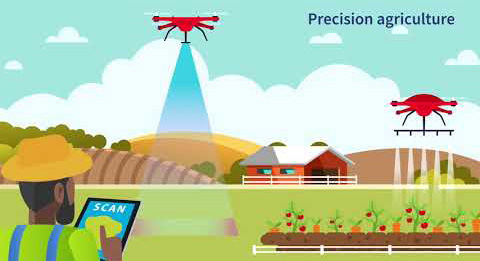Companion Farming
Biodynamic permaculture farming involves restoring the soil to a balanced living condition through the use of a completely digested form of crude organic matter known as stabilized humus.
Crop rotation, correct composting and proper intercropping can all contribute to a healthier biodynamic yield.
You'll be startled at the difference in taste between the sweet flavor of bio-dynamically grown spinach leaves, and the ones that organic gardening produces.
The aim of peppering is to inhibit the reproductive potential of any plant, insect, or animal one applies the method to. Peppering is a method of pest control that involves weeds, insects, possums, rabbits, and rats.
With companion farming certain vegetables, flowers, fruits, herbs, and fish mutually benefit each other by eliminating each others' pests and influencing the quality of each others' taste.
Aquaponics is a form of agriculture that combines raising fish in tanks (recirculating aquaculture) with soilless plant culture (hydroponics). In aquaponics, the nutrient-rich water from raising fish provides a natural fertilizer for the plants and the plants help to purify the water for the fish. This fresh local food is free of pesticides, herbicides and chemical fertilizers.
Aquaponics can be used to sustainably raise fresh fish and vegetables for a family, to feed a village or to generate profit in a commercial farming venture, year ‘round, in any climate.
Greenhouse farming + a Blockchain Dome as a Heat House
Greenhouse farming of produce, floriculture, cannabis, or nursery products can be much more productive than open air (urban) farming, as pests, bacteria, and fungi have their optimal humidity levels for maximum crop damage. This enables better (IoT) control over:
IoT involves affordable sensors that track soil moisture, air temperature, inputs, crop stages, yields, humidity, etc. They push data upfront, which enable instant analysis and action by software and a few people. This data can help growers react in real-time or pinpoint areas for improvement of the next crop cycle. The ensuing efficiency and yield improvements can reduce the need for chemical fertilizers, heavy machinery and GMOs.
Aeroponics
Long distance produce transportation leads to more preservatives and less vine-ripened foods, thus less taste and nutritional content. IoT controlled local greenhouse and vertical farming operations with 24/7 cultivation in computer-controlled environments, using drip-irrigation technologies save 90% of the water otherwise being wasted on subsoil and roofs that reduce evaporation.
Blockchain, the end of the wealthy middleman?
The actual blockchain component, meaning a permanent and temper-proof distributed ledger to build trust between parties is only a part of the use of the technology. More interesting is what this technology allows us to do. Especially, the way it incentivises work to get done.
Assets and transactions get stored and secured cryptographically on the blockchain, mostly through computing power. Real world blockchain applications are uniquely suited to solve particular problems, and thus create value to us.
This value gets represented in the form of a token which miners earn and convert back into real world value, crypto currency, whose value, however, depends on a globally agreed upon value among buyers & sellers, rather than a specific function that it serves. These tokens maintain or grow in value as the real world utility for the blockchain applications grows.
Potential uses for Blockchain in Farming:
In an impoverished part of Africa, a particular blockchain App allows farmers perform various transactions such as hiring custom seeders and harvesters, cooperating with other farmers for bargaining power, taking their crop to market and monitoring it through the production process, and more.

This ability to build trust with other farmers, vendors, and processors is life-changing for these farmers. They were able to triple their farm income, by: